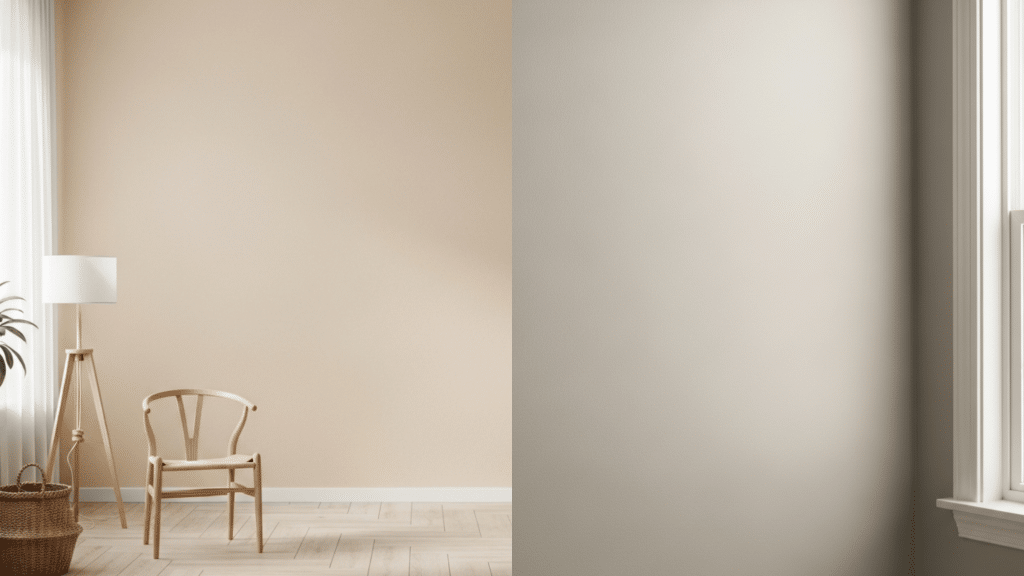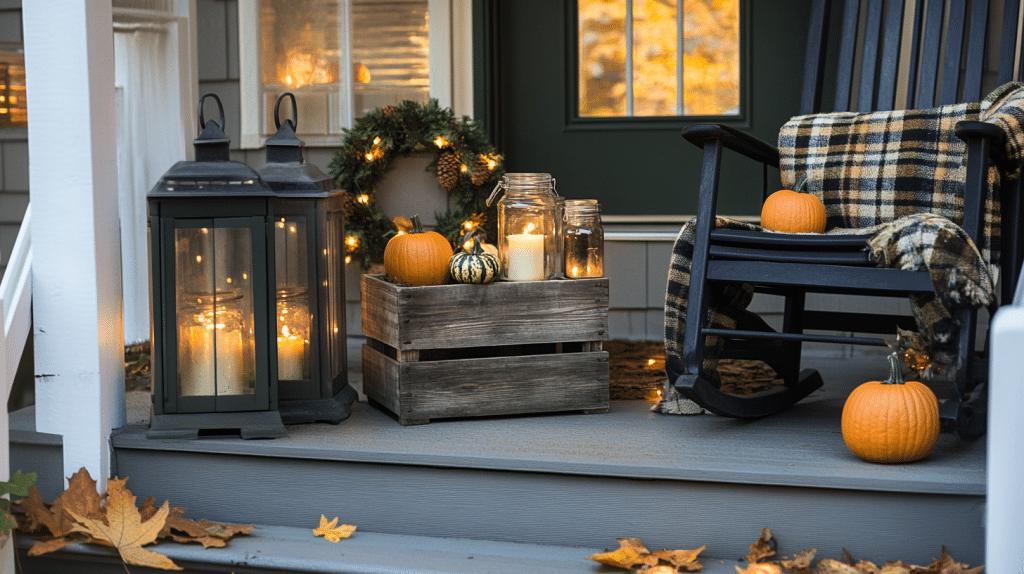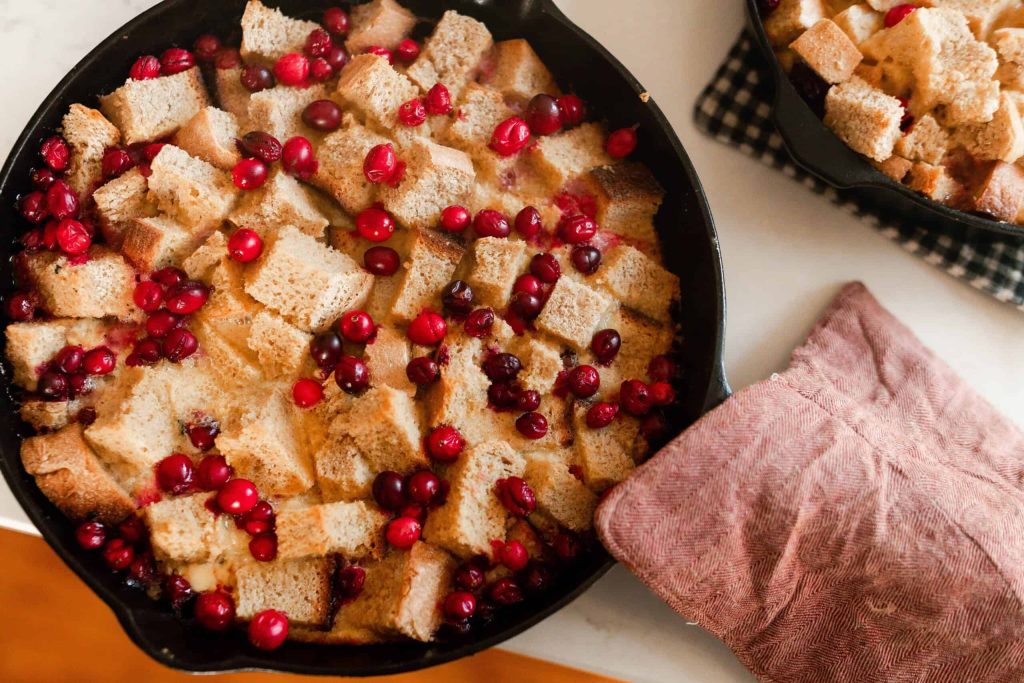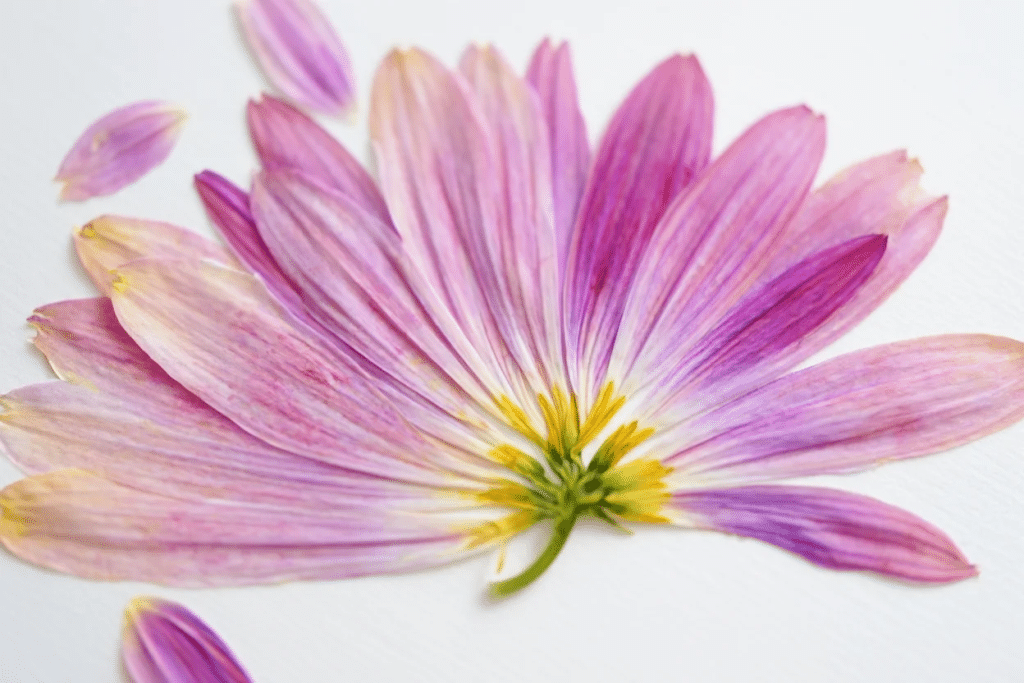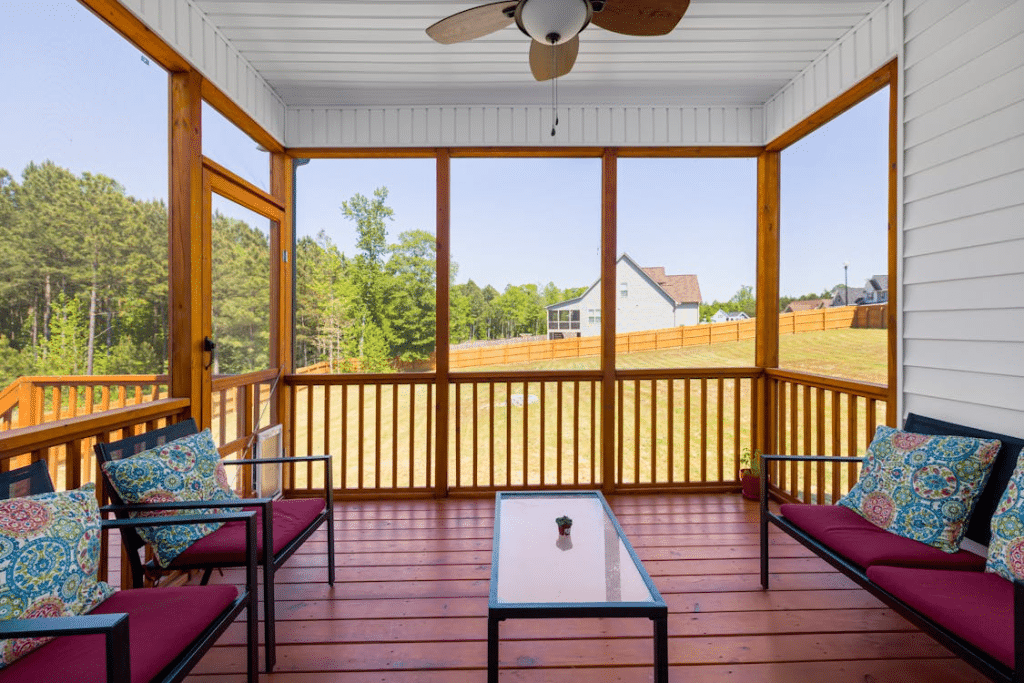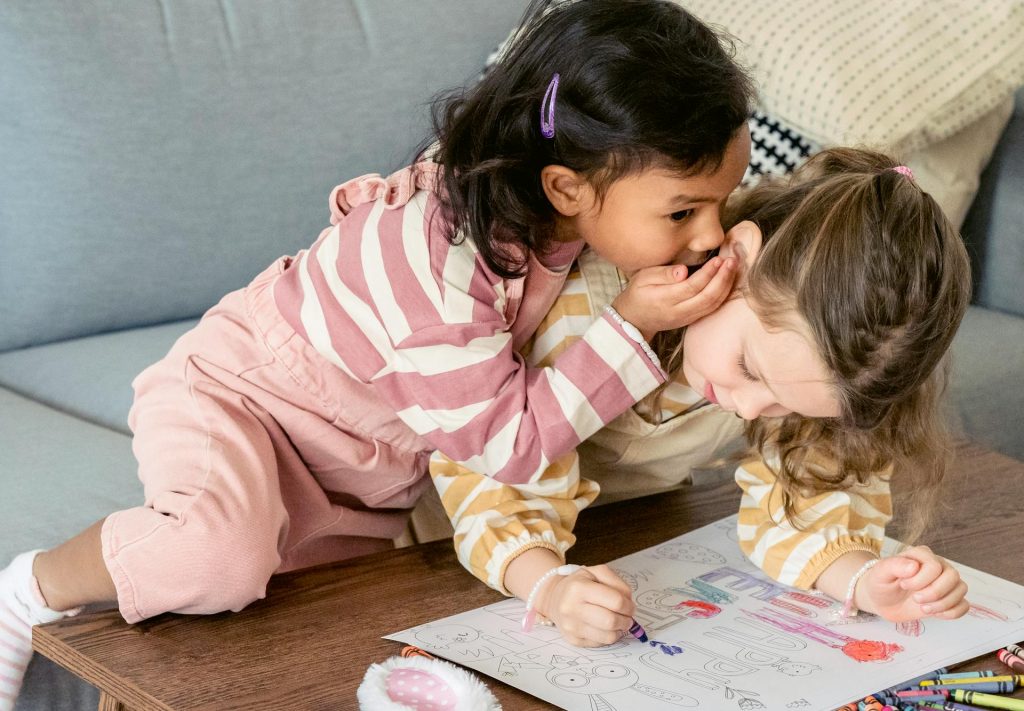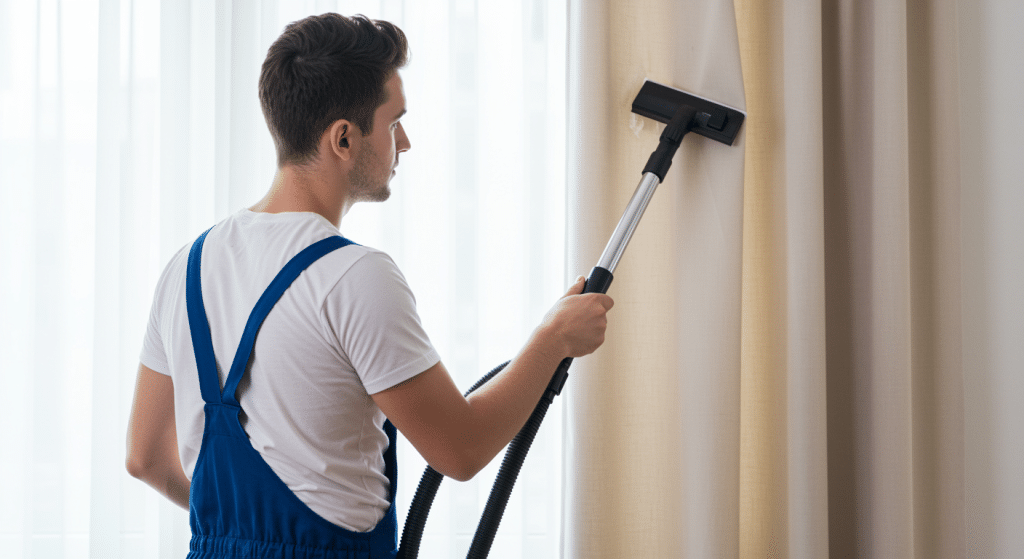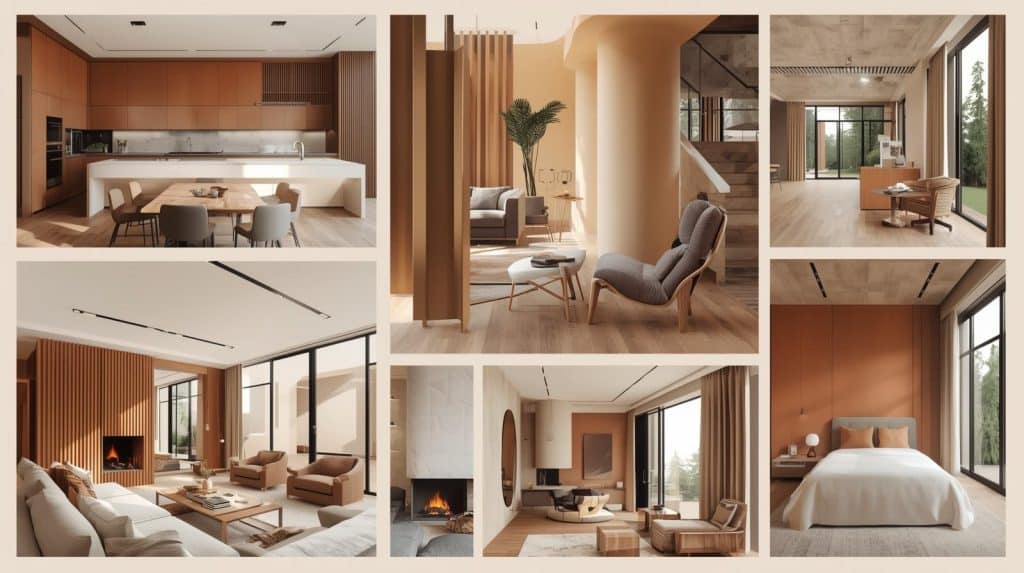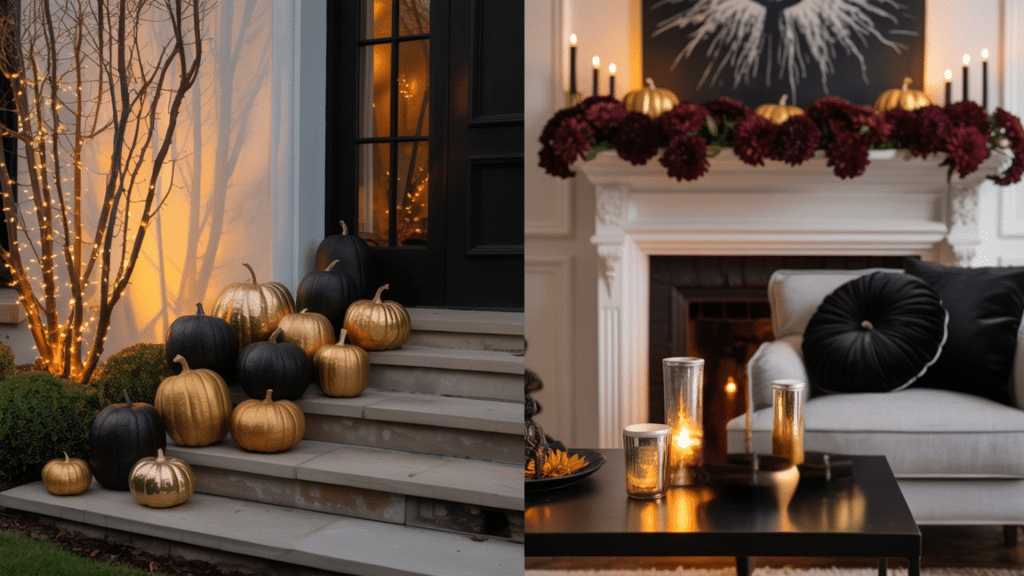I stared at paint swatches for hours, completely stuck between two of the most popular neutral colors on the market.
Accessible Beige and Agreeable Gray might look similar at first glance, but they create different moods in your home.
Once you understand the undertones, lighting effects, and room pairings for each color, you’ll make confident choices that change your space. I’ll show you exactly how these colors behave in real homes so that you can pick the perfect one for your lifestyle.
Let me walk you through everything I learned about these two paint favorites, and you’ll never second-guess your color choice again.
Color Breakdown of Accessible Beige vs Agreeable Gray
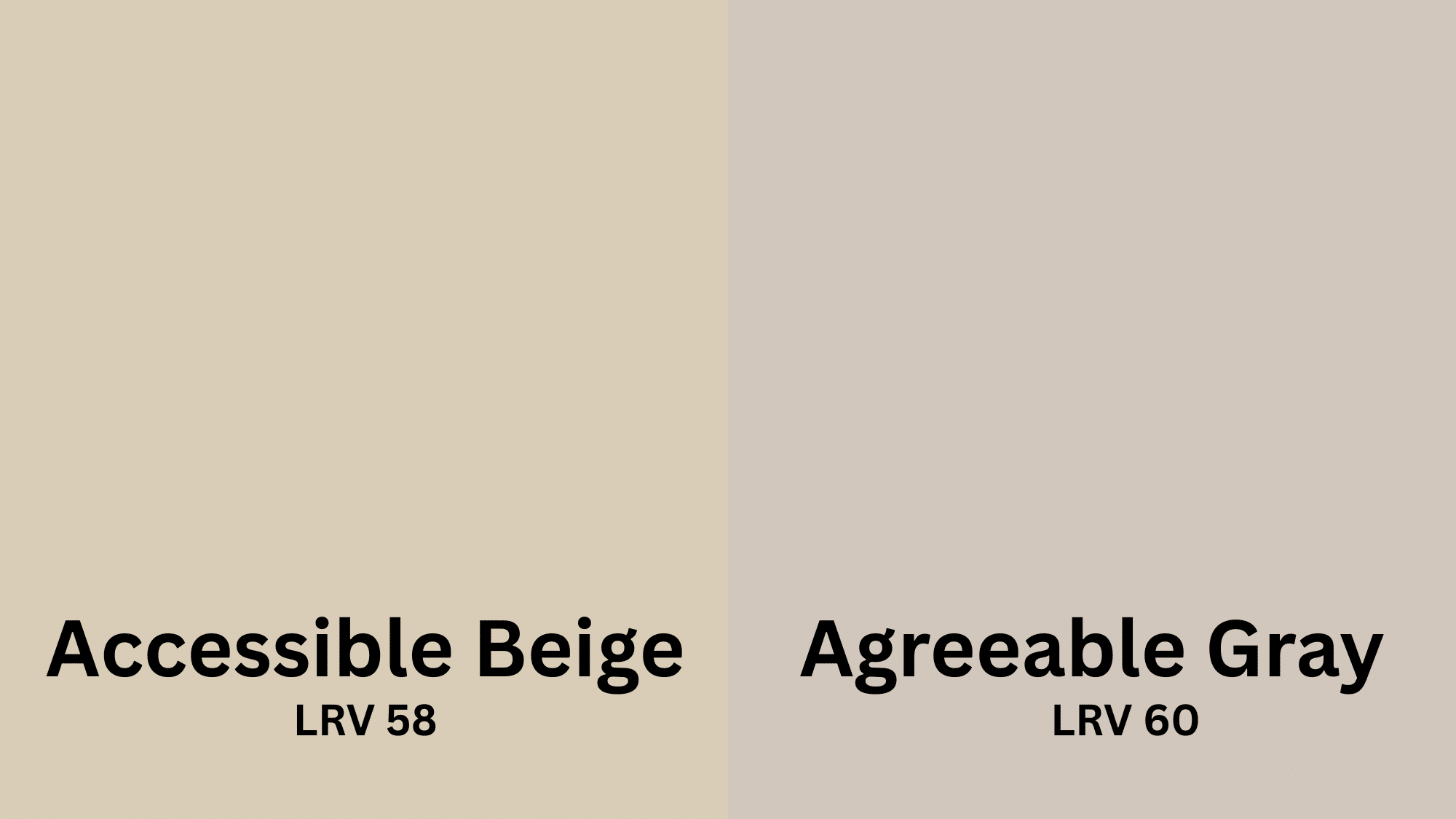
Accessible Beige (SW 7036) is a warm, creamy neutral from Sherwin-Williams that leans toward the beige family. This color has a cozy feel that makes rooms feel inviting.
I notice it brings out the warmth in natural wood and creates a soft backdrop for both traditional and modern furniture. The color has enough depth to avoid looking flat, but it’s not so bold that it overwhelms your space.
Agreeable Gray (SW 7029) is Sherwin-Williams’ most popular gray paint, and for good reason.
This color sits perfectly between warm and cool tones. It’s not too gray and not too beige, which makes it incredibly versatile. I’ve seen it work beautifully in every room type, from bedrooms to kitchens to living areas.
| Specification | Accessible Beige | Agreeable Gray |
|---|---|---|
| LRV (Light Reflectance Value) | 58 | 60 |
| Hex Code | #D8CDB7 | #D1C7BC |
| Undertone | Warm beige with yellow hints | Warm gray with beige undertones |
| RGB Code | R:209, G:199, B:184 | R:209, G:202, B:192 |
The LRV numbers tell you how much light each color reflects. Both colors are in the mid-range, which means they won’t make your room feel dark or too bright.
How to Pick the Ideal Shade for Your Walls
Choosing the right paint color isn’t just about what looks pretty on a swatch. There’s actual science behind how colors work in different spaces, and I want to share what I’ve discovered through my own experiences and research.
Kitchen
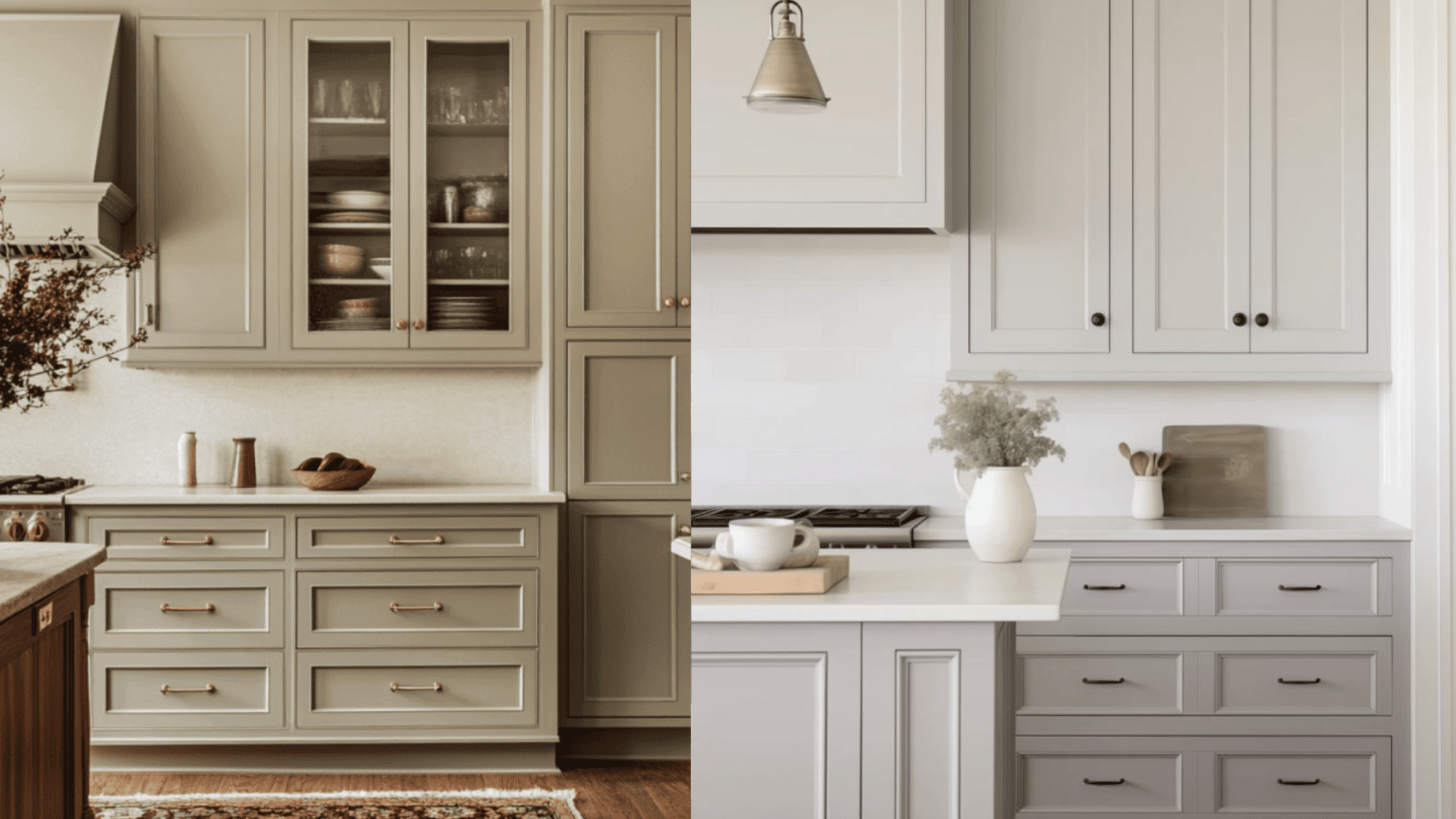
Accessible Beige cabinets create a warm, creamy look that feels timeless and cozy. It can be paired with warm brass hardware and natural wood countertops, and natural wood mixing bowls.
To elevate this look, add crisp white subway tile backsplashes and warm pendant lighting.
However, silver accents can look out of place – the warm walls make cool metals feel cold and unwelcoming. The beige works beautifully with farmhouse and traditional styles.
Agreeable Gray cabinets offer a fresh, modern appearance that works with any hardware finish.
I’ve seen them look stunning with both marble and butcher block countertops.
Bold backsplash patterns, mixed metals, and contemporary lighting can be great additions. The versatility makes it perfect for transitional and modern kitchens that need to adapt over time.
Stairway
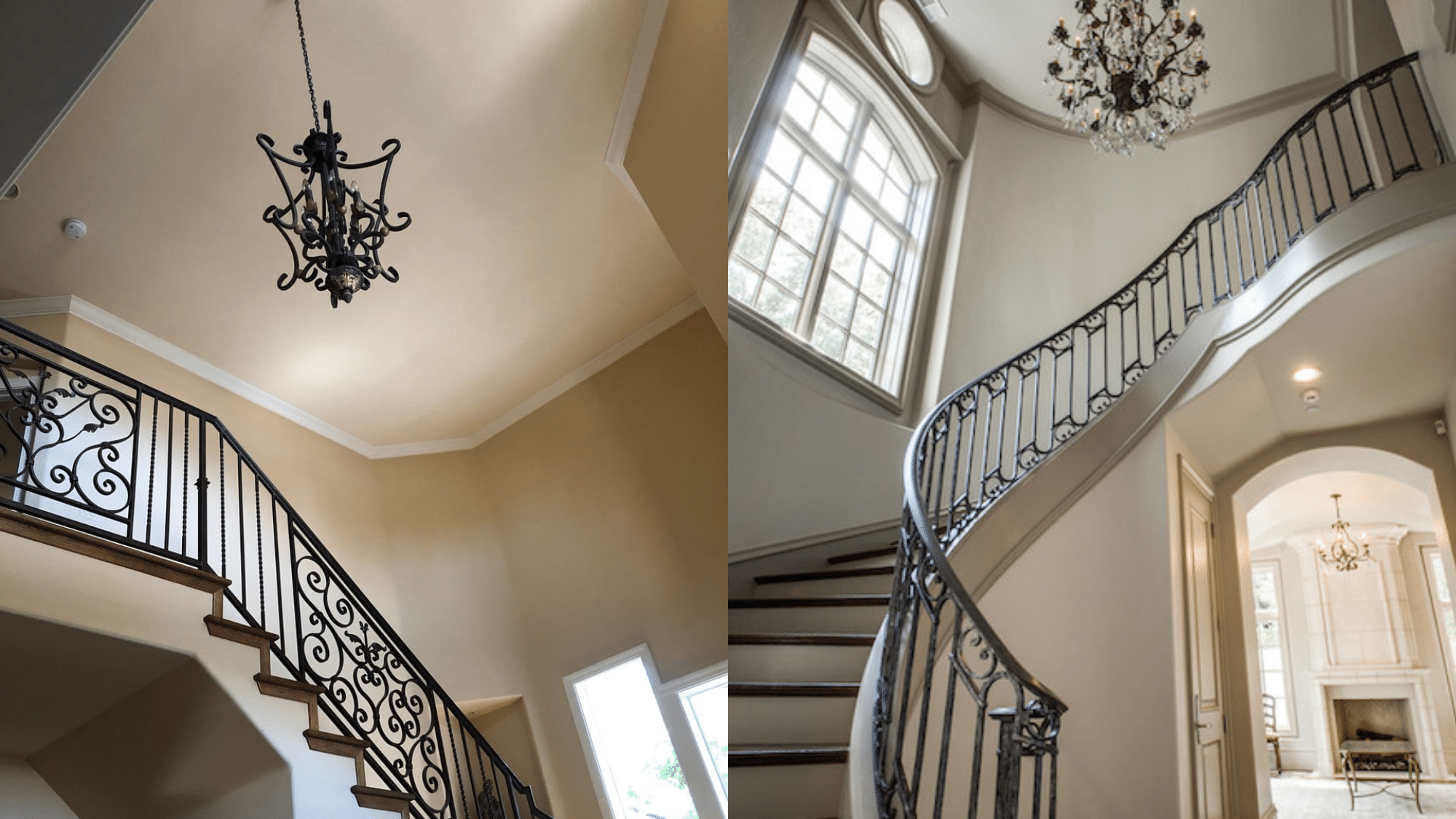
Accessible Beige stairways feel warm and welcoming, but can make narrow stairs feel tighter. I love how they look with dark wood railings and warm brass fixtures. Cream sofa blends beautifully but doesn’t disappear.
To go a step further, you can add bright white trim, good lighting every few steps, and consider wainscoting halfway up for visual interest.
Agreeable Gray stairways make narrow spaces feel more open and airy. I’ve found that they work beautifully with both black iron and wood railings.
This look can be enhanced with crisp white trim, modern light fixtures, and runner rugs for texture.
The balanced color helps reflect light in typically darker stairway areas, making them feel safer and more spacious.
Bedroom
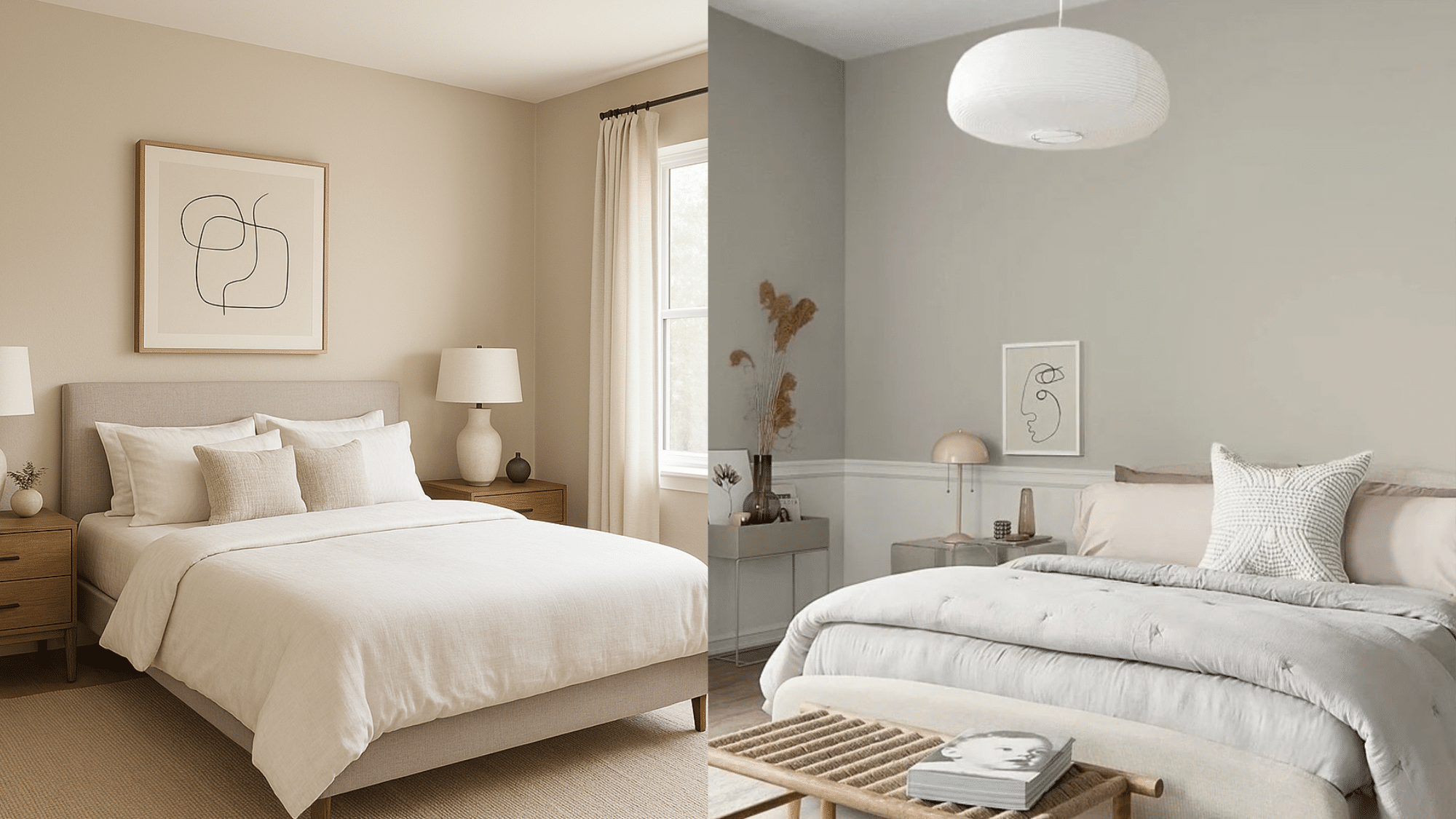
Accessible Beige bedrooms create a cozy sleep sanctuary with warm, restful vibes. It makes white bedding pop and wood furniture look richer.
A warm, wooden coffee table and an oak bookshelf look incredible against these walls. Evening lamplight brings out the creaminess beautifully.
Warm-toned furniture (cherry, oak, mahogany) pairs beautifully with Accessible Beige. The yellow undertones in the paint complement the warm wood tones. I’ve seen this combination create cohesive, welcoming spaces.
To elevate this look, one can add layers of cream and ivory textiles, warm brass lighting, and natural wood accents for that spa-like retreat feeling.
Agreeable Gray bedrooms feel fresh and clean while staying calming for sleep. I’ve found they work with any bedding color and make artwork stand out beautifully. The same wood furniture looks great, but now any silver and chrome accents fit perfectly too.
Cool-toned furniture (painted pieces, metal accents, glass) works better with Agreeable Gray. The balanced undertones don’t compete with cooler materials.
Elevate this look with crisp white trim, varied textures in throw pillows, and statement lighting.
The versatile backdrop allows you to change your seasonal decor without repainting. Even on overcast days, the room still feels light and airy.
Best Color Palettes
I’ve experimented with numerous color combinations over the years and learned which palettes work best with each of these popular neutrals. Let me share my tried-and-true combinations that create beautiful, cohesive spaces.
Accessible Beige
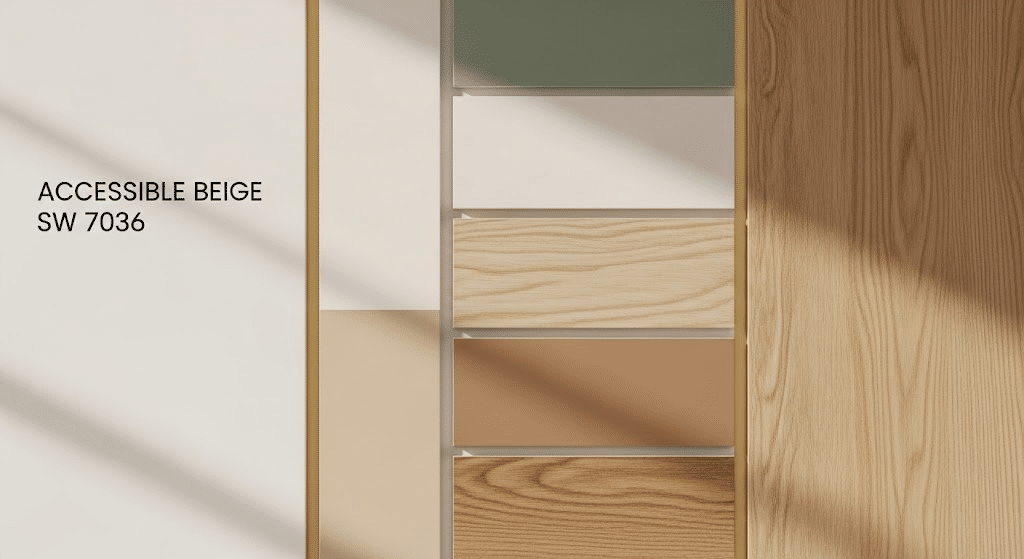
After countless trials and testing of color combinations, I’ve learned which palettes work best with Accessible Beige. Let me share my tried-and-true combinations that create beautiful, cohesive spaces in your home:
1. Classic Warm Palette: Cream whites, Soft caramel browns, Warm wood tones in natural oak or honey maple, Muted gold accents, Sage green
2. Modern Neutral Palette: Crisp white trim, Charcoal gray, Natural jute and linen textures, Black metal accents, Soft blush pink
3. Earthy Retreat Palette: Mushroom gray, Terracotta orange, Rich chocolate brown, Cream and ivory, Deep forest green
Agreeable Gray
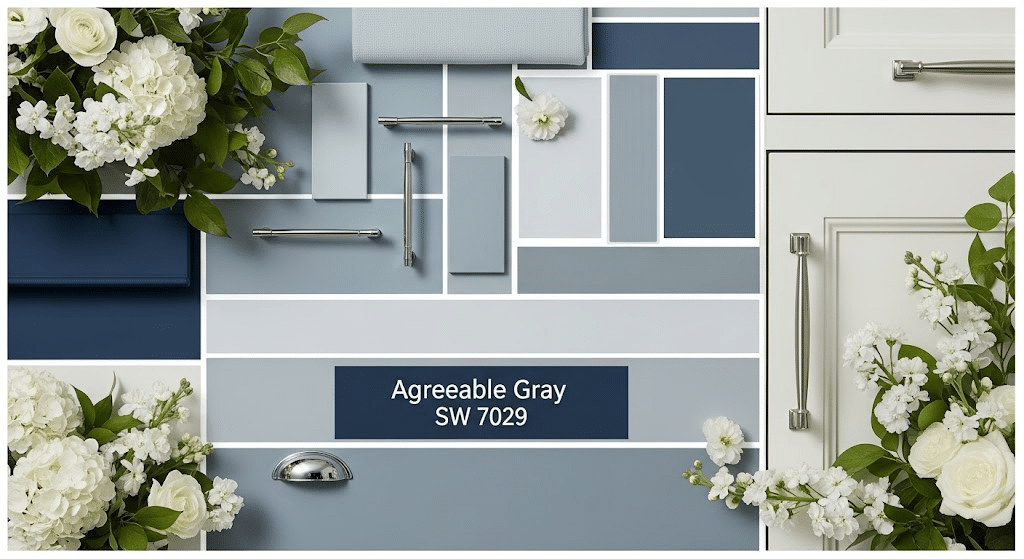
Agreeable Gray’s balanced nature means it works beautifully with both warm and cool palettes.
Through testing different combinations in my own spaces, I’ve found these three approaches create stunning results with this versatile neutral:
1. Cool Contemporary Palette: Bright white trim, Navy blue, Silver and chrome hardware, Cool blue-gray
2. Warm Transitional Palette: Soft ivory trim, Warm taupe, Brass or gold hardware accents, Dusty rose or coral, Natural wood tones
3. Refined Monochrome Palette: Various shades of gray, Black accents, White, Silver metallic touches, Clear glass and crystal elements
Tips for Using Each Color in Your Home
Here are my top tips for maximizing the benefits of both Accessible Beige and Agreeable Gray.
- Test Agreeable Gray’s warm undertones – Despite being called gray, it has beige undertones that make it warmer than pure grays, so always compare them side by side.
- Mix metals freely with Agreeable Gray – This color works with both brass and chrome finishes, making mismatched hardware look intentional instead of accidental.
- Give Accessible Beige warm lighting – Switch to 2700K LED bulbs to transform this color from muddy to rich and inviting.
- Pair Accessible Beige with crisp white trim – The contrast between warm walls and bright white trim makes both colors pop, rather than blend.
- Follow the 60-30-10 design rule: choose one color as your dominant shade (60%), use another for secondary surfaces like accent walls (30%), and add a third accent color (10%) to tie everything together throughout your home.
Final Thought
After working with both colors throughout my home, I’ve learned that your choice comes down to the feeling you want to create.
Accessible Beige brings warmth and coziness to spaces where you relax, while Agreeable Gray offers versatility and freshness in active areas.
The key is matching each color’s strengths to your room’s function. You don’t have to pick just one – I use both strategically to create flow while giving each space its own personality.
Start by testing large samples on your walls for at least a week. Your perfect neutral is waiting for you.


